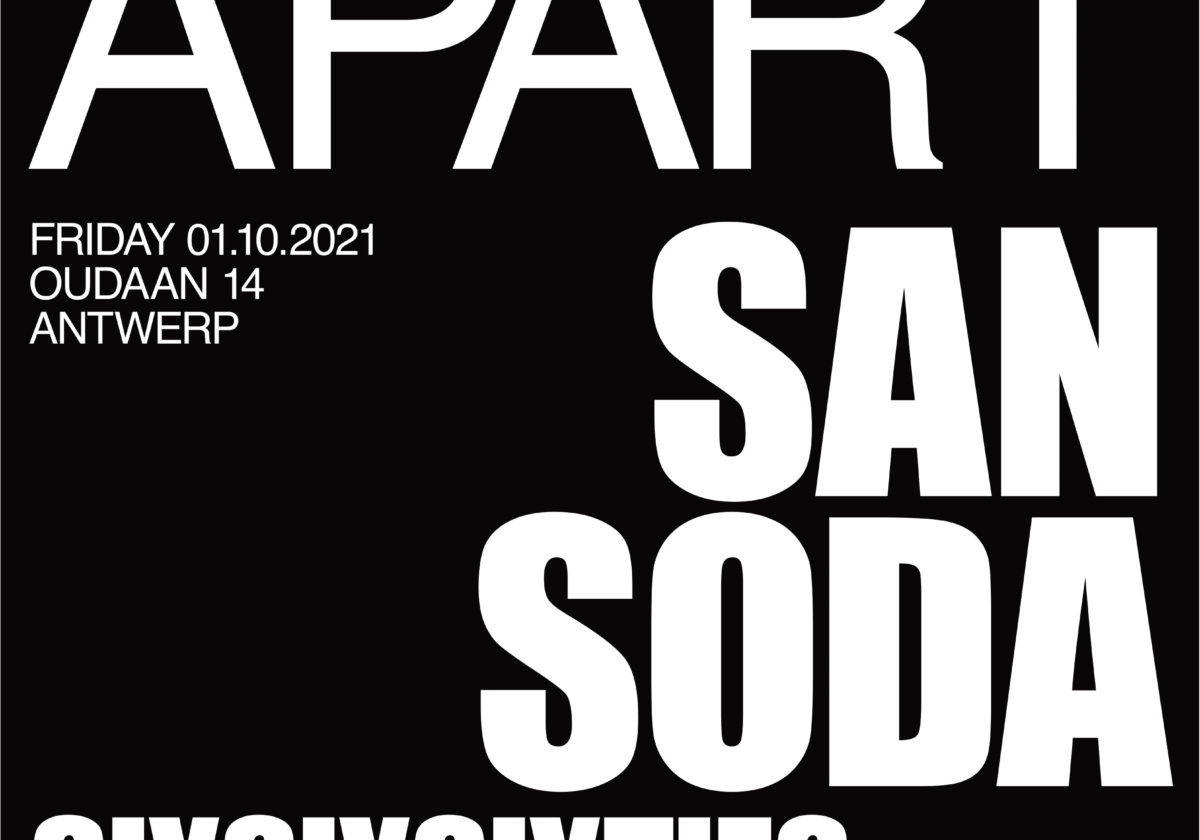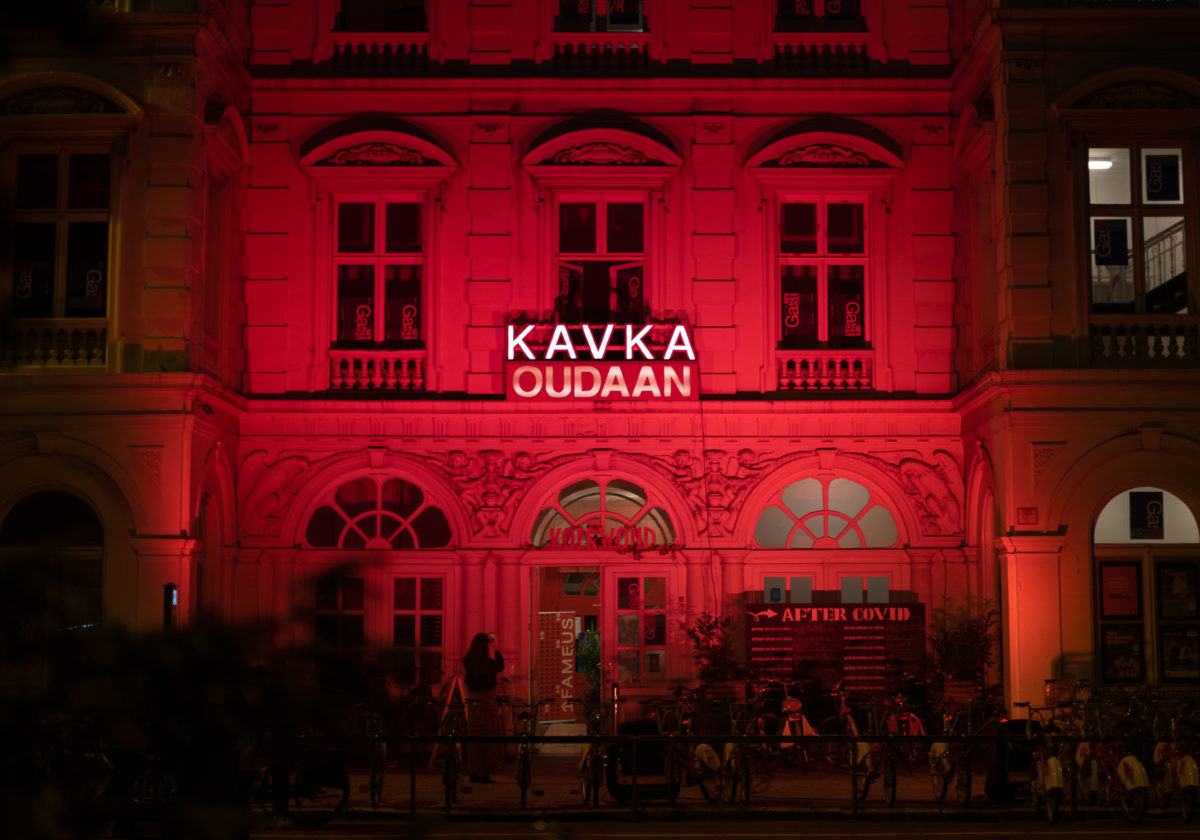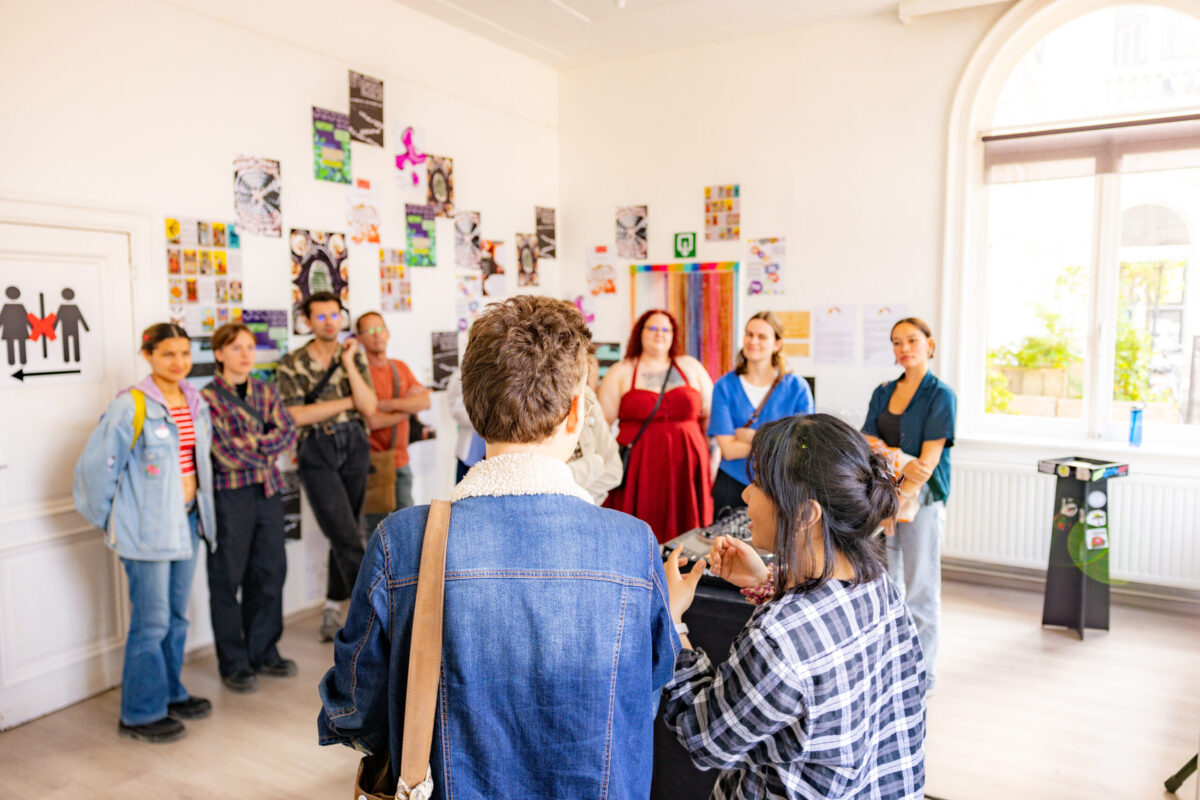
INTERVIEW WITH CURATOR IN/OUT EXHIBITION
Geschreven door Kavka - 25/07/2024
In this interview, we speak with Sam, the curator of the “In and Out” exhibition. Sam explains the concept behind the exhibit, detailing the journey that led to its creation and how she transformed her findings into this captivating display. The exhibition is open until August 27th.
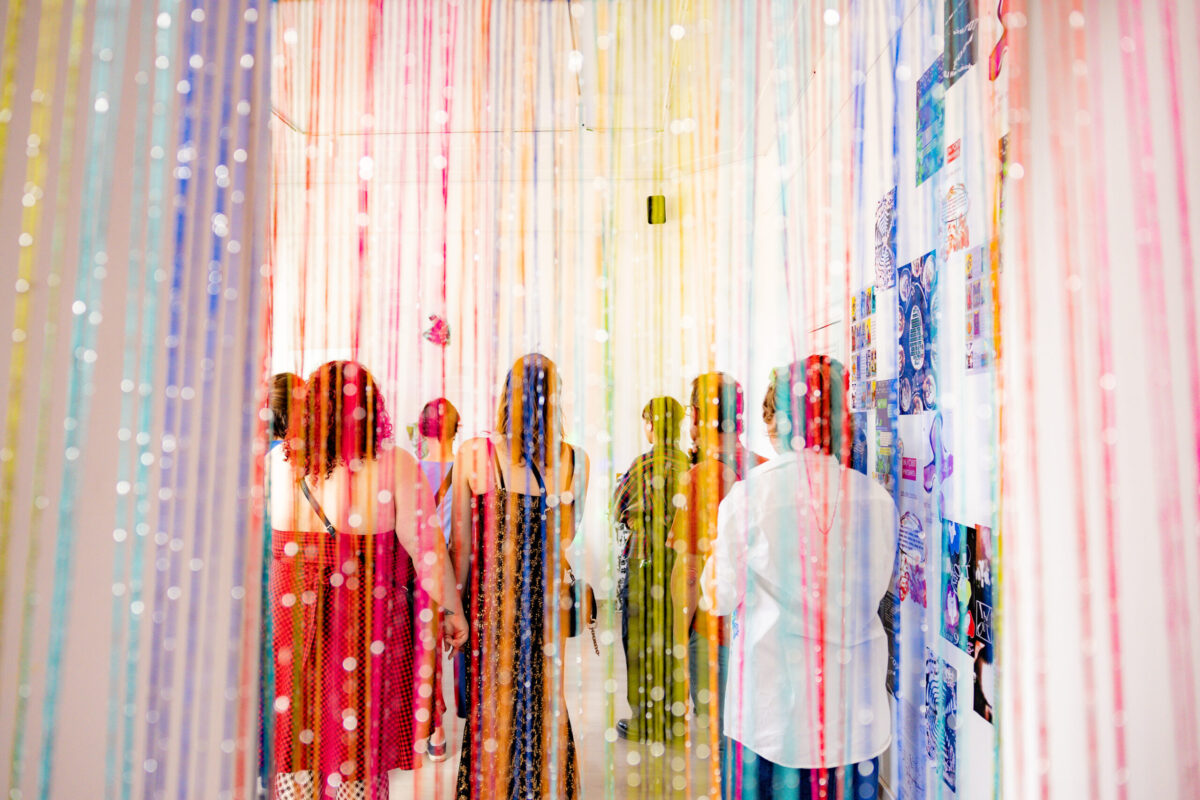
Kavka: Can you explain the exhibit a bit?
The exhibit is called “In and Out,” and it explores new ways of being in both the digital and physical realms, specifically focusing on the phenomenon of coming out.
I’ve noticed that, even at 25, a lot of my peers and those younger than me are at ease with coming out both online and offline. As a queer person myself, I’m quite curious about this process. This exhibit explores this phenomenon through the experiences of four interviewees based in Antwerp, all of whom are young.
The exhibit features artworks by two queer artists we’re collaborating with: Violetta and Yavi, both from Antwerp. Their art reflects their own coming out experiences. The exhibit is set in a queer club, featuring a rave, to enhance this exploration.
We delve into how digital platforms and physical settings play roles in coming out. For those I interviewed from Antwerp, we also examine their relationship with the city as queer individuals.
This exhibit is an invitation for everyone to indulge in the experiences of coming out or, perhaps, coming in. The key is to surrender to the narratives presented, as well as to the party atmosphere.
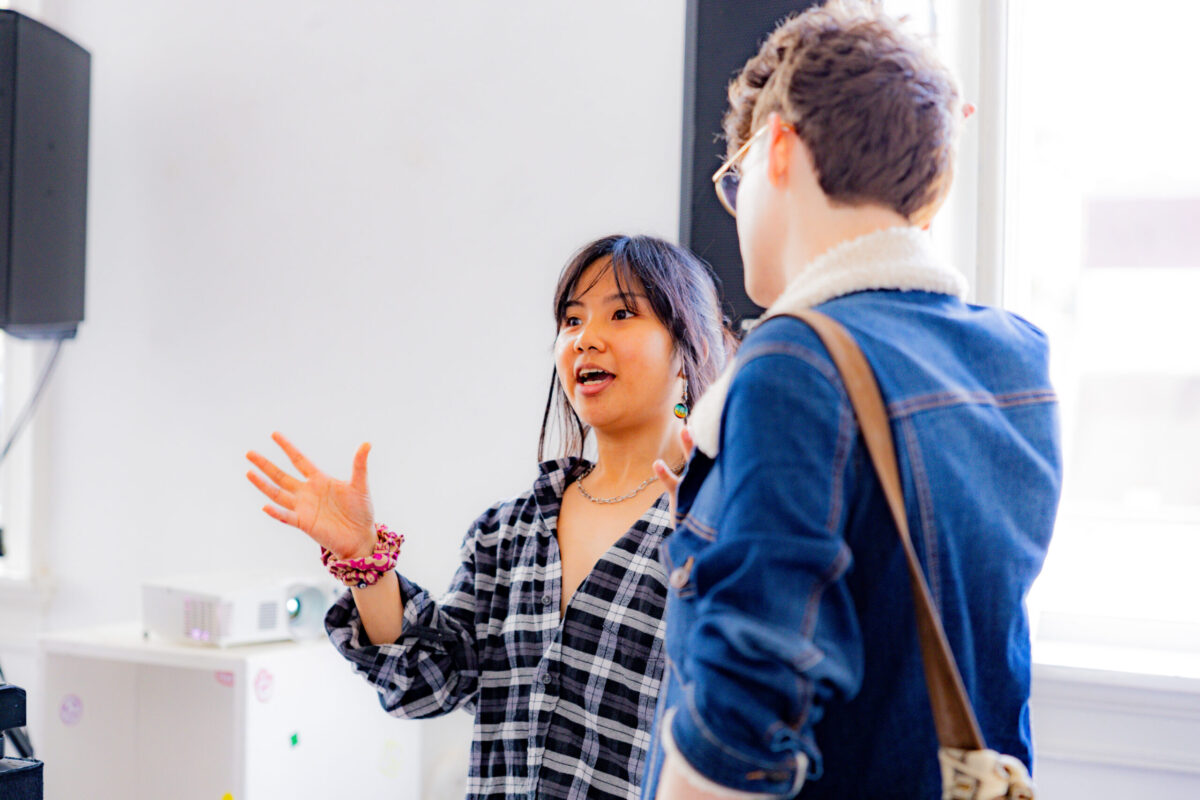
Kavka: Are people not afraid that when they out themselves digitally, others might tell their family in real life?
The digital aspect of coming out allows for more control. You can go private, hide your stories, and still express yourself while protecting your privacy. You can block homophobic people, which some of the interviewees did before gaining the confidence to come out further. There is a fear of being exposed, but they feel empowered by the choice they have.
Sometimes, people get comfortable coming out within their online bubble first, and then come out offline, or vice versa. Some interviewees came out offline first, then online.
Kavka: How did you meet all the people, all the artists, and the people you interviewed?
This exhibit is in collaboration with Het Roze Huis, the LGBTQ organization in Berchem. One interviewee I got in contact with through the organization, another is a friend, a third is a friend’s friend who told me they are queer, and the fourth I found randomly through a search.
For the artists, I needed them to be queer and young, as that’s the essence of the exhibit. It so happens that my housemates are friends with the artists. We also had an open call, but it wasn’t very responsive.
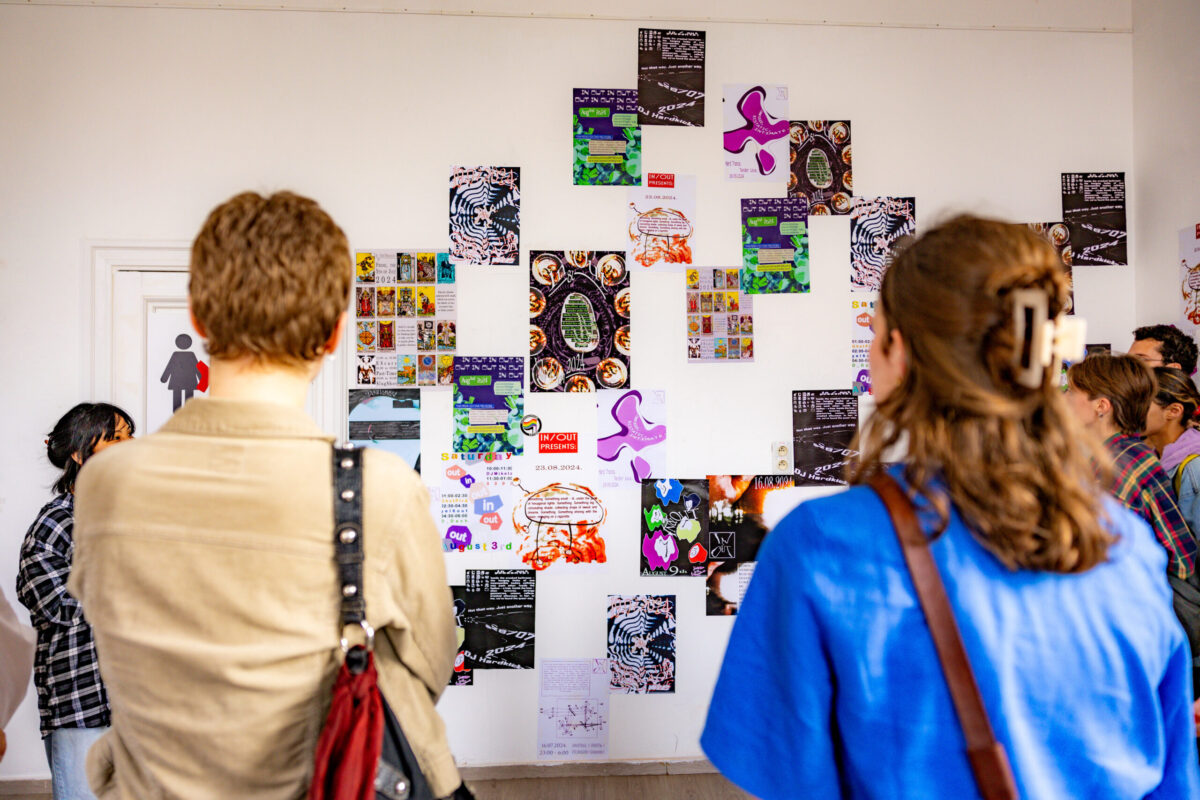
Kavka: What does the rave scene have in common with the queer community?
Historically, and from personal experience, raves represent a surrender to the ecstasy of celebration. In a rave, you let go, and when you’re not out, there’s a lot of tension within you. The dance floor, the dark, and the freedom of dress provide an environment to express who you want to be.
We chose the rave setting because identities explode, and energy bursts. This is a metaphor for the tension and release associated with coming out. The rave allows this because everyone is doing it. I’m not encouraging getting drunk, though! (laughs)
Kavka: What do you hope the outcome will be?
In my curatorial practice, I aim to work with communities, especially in Antwerp. I’ve always liked Antwerp for its queer clubs. Through the interviews, I found that Antwerp isn’t as queer-friendly as one might think. There is significant discrimination and a lack of openness despite the vibrant scene.
The exhibit aims to highlight the struggles and diverse ways of coming out, whether digital or physical. We also question whether coming out is necessary if being ourselves becomes normalized. Many interviewees find it annoying that straight people don’t have to come out.
This exhibit hopes to give non-queer people and allies hints to understand when someone is queer, promoting new ways of understanding coming out, or even not forcing it.
The IN/OUT Expo runs until August 27
